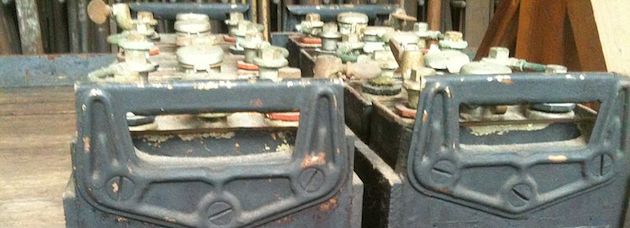We’re About To See A Serious Battery Disruption
I find it fascinating that we live in a world that sees things go away, and then come back around. In the case of Disco, it became popular, went away, and then came back in the ’90s, only to disappear again. Our collective need for the lowly battery is one of the more interesting cyclical love affairs. And, we appear to be at the crux of a real, serious point of disruption for this technology.
Many aren’t aware, but batteries were once a cumbersome requirement for things like radios. In the mid-1920s, a Toronto-based investor Edward S. Rogers, Sr created a radio that could run only on AC power, removing the need for messy, and dangerous batteries. The battery-less radio would improve to include hand cranks and even get power from the radio waves themselves.
But then, batteries returned with a vengeance. This probably happened in the seventies and eighties with the introduction of lithium and lithium-ion batteries. This coupled with the rise of Internet connectivity and portable devices, culminating with what we know as smartphones now. Much of this technology is impossible without small, powerful batteries that allow us enough time to use the device before recharging it. Imagine your iPad needing an early Nickel-Iron battery? No so portable, right?
Now, we’re at what appears to be the trough of another wave of battery technologies. Several needs are driving this. The ever-popular mobile device has gained enough traction to displace computers, each of them requiring batteries. Given that these devices continue to converge features – the newest being heath related – more and more power is required to increase, or maintain at least use of a device all day. Efficiencies are improving, but having to charge a phone once or twice a day really does suck. If Apple were to make a phone that held a charge for a week, we’d see a huge disruption in mobile devices.
Like mobile devices, electric and hybrid cars require serious battery power for a useful range. Unlike tablets and phones, however, electric cars haven’t really taken off. For someone like myself, I’d need the kind of range in a car that just can’t be purchased. In addition, the infrastructure for quick and easy charging just isn’t there. The battery is the center of this problem and needs more than just a pretty face (like the Tesla).
I have been in a Tesla Model S too. While I did not get to drive the car, I was absolutely impressed with the feel, look and eutectics of the vehicle. I wanted one. The last time I actually wanted a car was the Pontiac Feiro (before I became too large to fit in the thing). While my trajectory to an electric car has to include a Toyota Prius hybrid; I’m fairly confident that I’ll be seeing some sort of electric vehicle in the future.
You ought to check it out yourself if you haven’t. Tesla has a storefront in the Yorkdale shopping mall just north of Toronto. I encourage you to simply open the driver’s door, and sit down.
Update: Companies like StoreDot are doing some very interesting stuff. They show off a demo of a charging process that takes 30 seconds. If this kind of thing is possible, we’re in for some amazing advancements.
What we’re seeing now is a massive, organized effort to create a stronger, lighter battery technology. If the past is any indication, having a group of industries rally around a problem eventually solves it. We’re seeing massive companies and startups together developing technology that will drive industries in excess of trillions of dollars. You can be sure this will happen sooner, not later. When the kids of the future complain about having to charge their iPhone once a month, we can snicker at them and say “Back in the day…”


